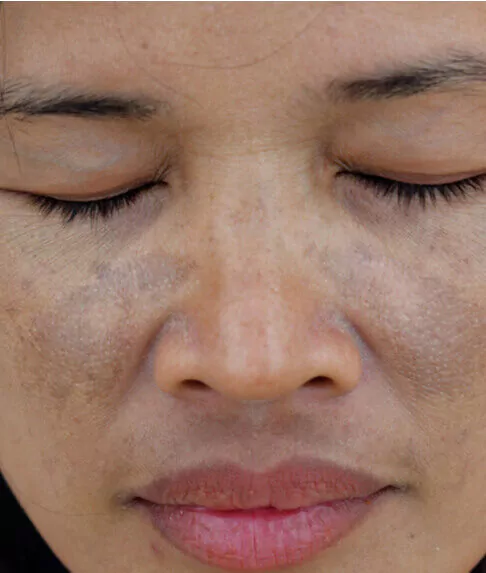
Inflammation can occur in any part of the body, including in the skin. The visible signs of inflammation-swelling and redness-develop as a result of the body’s natural defense against microbes, toxins, diseases, etc. When the body detects an insult, white blood cells, antibodies, and various other inflammatory mediators, including cytokines and interferons, flood the affected area. Melanocytes, the cells that produce skin pigment (called melanin), may also be activated. In addition to redness and swelling, other symptoms of inflammation include heat, itch, and/or pain or tenderness. When the body determines that the threat has passed, the natural inflammatory response shuts down, and the swelling and pain diminish. Redness typically subsides gradually. However, in some instances, rather than return to the skin’s natural color, redness can change to dark shades of brown, purple, tan, or even gray. These skin markings can be persistent, and are known as post-inflammatory hyperpigmentation or PIH. PIH can develop in individuals of all skin types, although those with darker skin may be at risk to develop PIH more quickly or to develop darker patches.
How is PIH Identified?
Post-inflammatory hyperpigmentation is a darkening of the skin that persists after an inflammatory skin condition. Purple, brown, or tan-sometimes with a blue or grey tint-flat spots or patches appear on the skin surface. PIH develops in areas where there was inflammation in the skin, and this is often obvious. However, sometimes the connection between PIH and inflammation can be less clear. PIH can persist long after acne lesions have cleared or a bug bite has healed, for example, and even the patient may not link the skin discoloration to that initial insult.
How is PIH Diagnosed?
There is no test to diagnose PIH. Doctors are familiar with the condition and can often identify it based on a visual assessment. The doctor will ask about any past injury to the skin or skin disease, including inflammatory skin diseases like acne or eczema and even bug bites. Sometimes chronic inflammatory skin conditions like acne or eczema may still be active, and the doctor will diagnose these, as well. The skin consists of multiple levels. PIH may be mostly located in the upper or epidermal level or may be present in the deeper dermal level. Doctors can use a special light called a Wood’s lamp to help see into the skin levels to determine where the pigmentation resides.
What Causes Post-Inflammatory Hyperpigmentation?
The skin is a remarkably complex organ that has multiple important functions. Among these, it protects the body from disease, infection, and insult. Immunologic cells reside in the skin, prepared to identify threats. When a threat is detected, these cells recruit other similar cells to the area to help mount a defense. A so-called “inflammatory cascade” may result, as the area is flooded with cells trying to protect the skin. Swelling and redness may develop as visible signs of this process, while sensations of itch and pain can occur.
Among potential causes of skin inflammation are:
- Injury, such as cuts, scrapes, and burns, that damage the skin
- Bug bites
- Irritants and allergens (such as poison ivy, nickel exposure, etc.)
- Inflammatory skin conditions, such as acne, eczema, psoriasis, lichen planus, and Pseudofolliculitis barbae (razor bumps)
- Skin infections
- Diseases that manifest on the skin, such as Chicken Pox.
Scratching or picking the skin can increase inflammation, as well as the risk for hyperpigmentation. Picking or popping acne lesions can prolong the healing process and may increase local inflammation.
Is PIH Permanent?
PIH is not permanent and can go away even if it is left untreated. However, full clearing of PIH can take months to years in some individuals.
It is better to prevent or minimize PIH in the first place. Some helpful strategies include:
- Limit sun exposure. Cover skin or seek shade as much as possible, and use a sunscreen with high SPF.
- Avoid scratching or picking at the skin and try not to squeeze or pop lesions.
PIH in Brief
Post-inflammatory hyperpigmentation is a darkening of the skin that persists after an inflammatory skin condition or injury. Purple, brown, or tan-sometimes with a blue or grey tint-flat spots or patches appear on the skin surface.
PIH Fast Fact
58% of individuals seeking medical care for acne had PIH, according to a study conducted in seven Asian countries and published in the Journal of Dermatology. PIH had been present for one year or more in half of these individuals.
Did You Know?
PIH seems to occur at similar rates in men as well as women, however there is some evidence that women are more likely to seek medical care.
